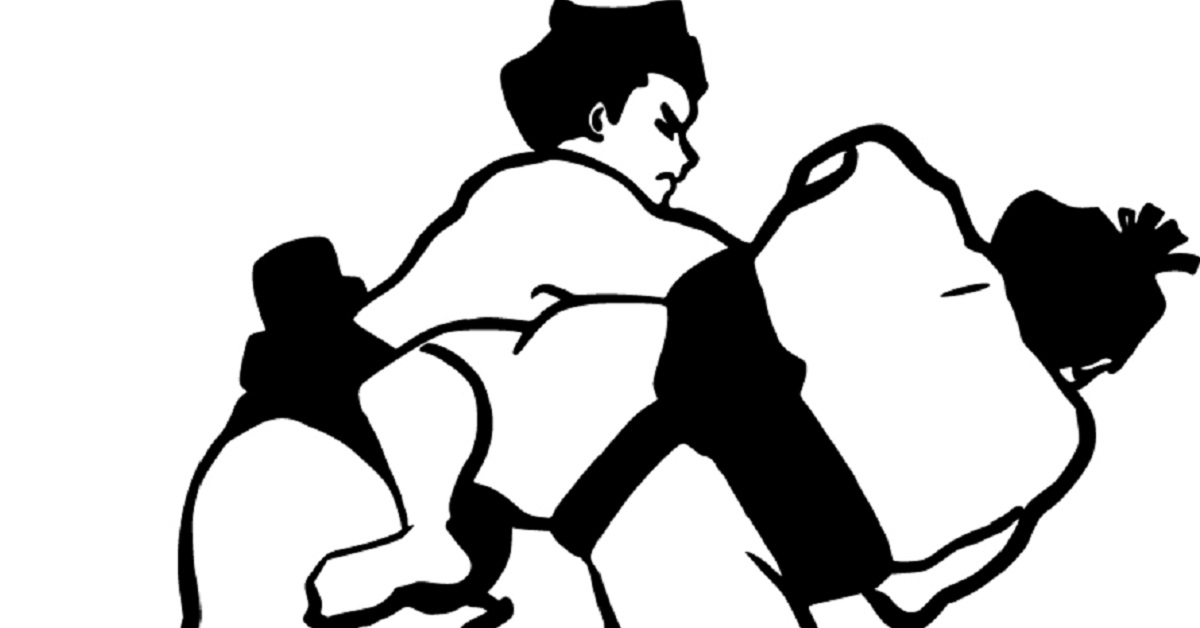Suriashi, the sliding footwork of sumo, is more than just a traditional movement. It is the foundation of stability, strength, and agility, enabling practitioners to control their bodies efficiently. By keeping the feet in contact with the ground, one can develop lower body power and precise balance, skills that are valuable not only in martial arts but also in daily life and sports performance.
What is Suriashi?
Suriashi is the fundamental movement technique in sumo, where the wrestler slides their feet along the ground without lifting them. Unlike ordinary walking, this method requires constant contact with the ground, allowing the wrestler to control their body weight while maintaining a stance that prevents giving any openings to the opponent.
This movement is not limited to sumo; it is also found in kendo, judo, karate, and other martial arts. The principle of “keeping the center of gravity low and sliding the feet” is a universal rule in combat sports.
Moreover, practicing suriashi serves as a training for body awareness. It requires conscious control of foot pressure, knee flexibility, and hip stability, which enhances the coordination of the entire body. Thus, suriashi may appear simple, but mastering it leads directly to the essence of movement itself.
Why is Suriashi Important?
The importance of suriashi lies primarily in strengthening the lower body and improving postural stability. Maintaining a low stance while sliding the feet engages a wide range of muscles, including the thighs, hips, calves, and core. It naturally works as a “moving squat,” training the entire body.
Suriashi also sharpens foot sensitivity. Since the human foot has numerous nerve endings, stimulating them enhances balance and reflexes. By keeping the feet in constant contact with the ground, the body becomes capable of quick reactions and stable movements.
In fact, suriashi is also used as a fall-prevention exercise for the elderly. It not only stabilizes daily movements but also improves athletic performance, making it valuable in both health and sports.
How to Perform Suriashi Correctly and Key Points
To practice suriashi effectively, correct posture and steps must be observed. The following table summarizes the basics:
| Step | Description |
|---|---|
| 1 Stance | Stand with feet slightly wider than shoulder width, toes angled outward |
| 2 Center of Gravity | Bend knees slightly, lower hips, and keep the torso upright |
| 3 Movement | Slide the entire sole along the ground forward, backward, or sideways |
| 4 Rhythm | Shift weight evenly left and right, maintaining steady rhythm |
Key points to remember:
- Do not lift your feet
- Keep your upper body steady
- Breathe deeply and calmly
By following these principles, suriashi becomes much more effective.
Specific Benefits of Suriashi
Consistent suriashi practice improves strength, flexibility, and balance simultaneously. Below is a summary of its main benefits:
| Benefit | Details |
|---|---|
| Lower body strengthening | Naturally trains thighs, hips, and calves |
| Core stability | Reduces upper body sway by stabilizing the center of gravity |
| Agility improvement | Enables quick reactions to the opponent’s movements |
| Fall prevention | Sliding feet reduces tripping risks |
| Cross-sport application | Useful in kendo, basketball, futsal, and more |
Thus, suriashi is more than a martial arts fundamental; it is a versatile training method with wide applications.
Tips for Making Suriashi a Habit
To maximize its benefits, suriashi should be practiced regularly. Even a few minutes daily brings noticeable results. Here are examples of training you can do at home:
| Practice | Method | Effect |
|---|---|---|
| Basic forward movement | Move 5 steps forward and backward | Builds leg strength and stability |
| Side movement | Move 5 steps left and right | Improves lateral agility |
| Diagonal movement | Move diagonally forward and backward | Enhances multidirectional adaptability |
It is also effective to practice in front of a mirror or record yourself on video. This allows you to spot mistakes and refine your form, making learning more efficient.
Suriashi and Its Parallels in Other Martial Arts
Suriashi is not unique to sumo but is a principle found across martial arts. The following table shows these connections:
| Martial Art | Similarities with Suriashi |
|---|---|
| Kendo | Sliding footwork used to maintain proper distance |
| Judo | Grounded stance to execute off-balancing techniques |
| Karate | Sliding steps to keep a low, stable posture |
| Aikido | Smooth, flowing steps forming the basis of techniques |
In short, suriashi represents a universal principle of martial movement.
Conclusion
Suriashi is the foundation of sumo movement, yet its value extends far beyond the dohyo. It simultaneously trains strength, posture, and sensory awareness, making it a versatile exercise for athletes, martial artists, and everyday individuals alike.
While it may look plain at first glance, consistent practice brings profound changes: improved core stability, faster reactions, safer daily movement, and stronger physical performance. For sumo wrestlers, it decides victory or defeat. For martial artists, it underpins all techniques. For ordinary people, it promotes health and prevents falls.
Incorporating suriashi into daily routines, even briefly, can nurture a stable body and a focused mind. Ultimately, the essence of suriashi lies not only in its role as a martial technique but also as a fundamental movement principle that supports life itself.





コメント